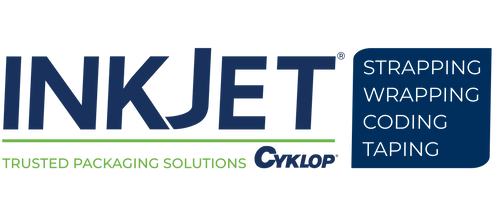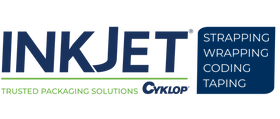Mylar Printing: Dos and Don'ts
Made from polyester resin, BoPet (biaxially-oriented polyethylene terephthalate) is one of today’s most popular plastic bag materials. Although “BoPet” may be a new term to many, most are likely familiar with its trade name: Mylar.
Since the 1950s, Mylar has been supplying high-quality BoPet bags for a variety of purposes. Known for their tensile strength, aroma-blocking properties, and moisture resistance, Mylar bags excel at keeping perishable items fresh and protected against outside elements like oxygen, light, and water. Due to these properties, Mylar bags are frequently used to package:
- Food
- Pharmaceuticals
- Chemicals
- Cannabis and CBD products
- Electrical components
- Consumer goods
However, it’s important to note that these solutions are not for people selling their products at a farmers’ market. Companies can’t just place a product into a Mylar bag and ship it to a store; they must also mark the bag with required codes and traceable text to comply with any relevant regulations or distributor standards. Once production volumes exceed an amount that can be labeled by hand, coding and marking solutions will become the most cost-efficient option.
Any company that packages a significant amount of product with Mylar bags needs two things: a conveyor-powered production line and a reliable printing solution. To complement different line configurations, space limitations, and application requirements, companies can use the following coding/marking machines to print on their Mylar bags:
- Continuous inkjet (CIJ) printers are high-speed production line printers that handle product variability with ease while operating uninterrupted at speeds of around 300 m/min.
- Thermal inkjet (TIJ) printers are compact, headache-free printers that are most commonly used for intermittent printing. Newer TIJ models like the Anser X1 can match CIJ speeds and integration capabilities.
- Thermal transfer overprinters (TTO) are production line printers that excel at creating vibrant, high-DPI markings using ribbon instead of ink
- Laser marking machines are high-speed marking machines that use concentrated light to leave permanent sharp codes and markings.
Each of these technologies has its own set of strengths and weaknesses, and potential buyers must understand the Mylar bag printing process before investing in a machine.
If you’re new to Mylar printing, follow these best practices to achieve marking success and uncover which technologies will most benefit your operation.
Don’t Assume There Is Only One Mylar Printing Solution
Industrial coding is a complicated process with many variables. Line configurations, conveyor speed, facility environmental factors, and specific coding applications will influence what coding hardware will work best for your operation.
Continuous inkjet printers and laser marking machines are ideal for fast-moving production lines. Their quick coding speeds and reliable accuracy make them a great choice for producing variable data and simple text. Thermal inkjet printers and thermal transfer overprinters may print at slower speeds than CIJ and laser solutions, but they also create larger, higher DPI markings.
Determining which technology is right for your operation requires a complete understanding of:
- Your coding applications and their requirements (e.g., size and resolution needs for text messages, product information, date codes, lot codes, etc.)
- How the form fill and seal machine may impact the substrate
- Conveyor system set up
- Available line space
- Any potentially challenging environmental factors (e.g., dust, extreme temperatures, excessive moisture, etc.)
Given how many factors you need to consider, it’s best practice to consult with an expert before purchasing a solution.
Determine Adhesion and Dry Time, Then Adjust Your Line and Mounting Position Accordingly
Once applied, codes and markings need a certain amount of time to:
- Adhere to the substrate, and
- Dry sufficiently.
If you do not provide enough adhesion and dry time in your line, codes will appear messy and perhaps even unreadable. To ensure that your markings remain sharp and legible, you must test your dry times and make any necessary adjustments to your line.
For example, if you know that your codes have a three-second dry time, your bags/film will need three seconds on the line before they are fed into a roller. In some cases, accounting for dry time is as simple as adding additional space between your marking solution’s printhead and the roller. Adjusting the printer’s mounting position can also create the required time.
Marking machines and their various ink options come with varying adhesion properties. As such, it is always important to get print samples performed by your expert prior to investing in a coding solution.
Establish a Reliable Trigger Method
A reliable photo-eye is essential to any production line coding system. If your coding system cannot accurately detect the substrate, it won’t create a code.
In our experience, roughly 90% of industrial coding applications are completed with photo-electric sensors. More commonly called “photo-eyes,” a photoelectric sensor emits a light beam to a receiver. Once the light beam is disrupted by a package, the sensor triggers the coding system to create a marking.
Photo-eyes are great for many coding applications but not for Mylar bags or films. Mylar coding lines often employ form fill seal machines that create endless lines of film. Photo-eyes are designed to detect single solid objects, not continuous lines of flexible plastic.
Instead of a photo-eye vision system, use one of these two technologies for more dependable substrate detection:
- Continuous print encoder: Instead of relying on vision systems to detect substrates, continuous print systems mark materials based on material length. For example, if you know that you need to print one code for every six inches of material, you can program an encoder to trigger a marking application at every six-inch interval.
- Fork sensor: Named after their fork-like appearance, fork sensors are U- or L-shaped beam sensors that have transmitters and receivers built into their prongs. The Mylar bag passes in between the prongs. When the sensor detects a “registration mark” (i.e., a blue or black icon on the bag intended to trigger printing), it alerts the marking solution to create a code.
By installing either of these systems into your line, you can create an accurate vision system that will detect every bag you need to print on.
Ready to Upgrade Your Mylar Printing Process? InkJet, Inc. Is Here to Help
Successful Mylar printing hinges on a few different elements. First, it’s essential to use a marking machine that is well-suited for your specific applications and unique production line setup. Beyond choosing the right hardware, you must also fine-tune your process to ensure that your machine will operate correctly and that all codes appear sharp and easily readable.
If you are looking for help with Mylar printing, the InkJet, Inc. team is here to support you. For over 30 years, InkJet, Inc. has helped companies across industries reliably print on Mylar material with speed and precision. Whether you need a new CIJ printer, laser marking supplies, or are unsure of which technology to start with, the InkJet, Inc. team has everything you need to achieve marking success. Contact us today to learn more.
To learn more about Mylar printing, contact InkJet, Inc. online or call 1(800) 280-3245.



